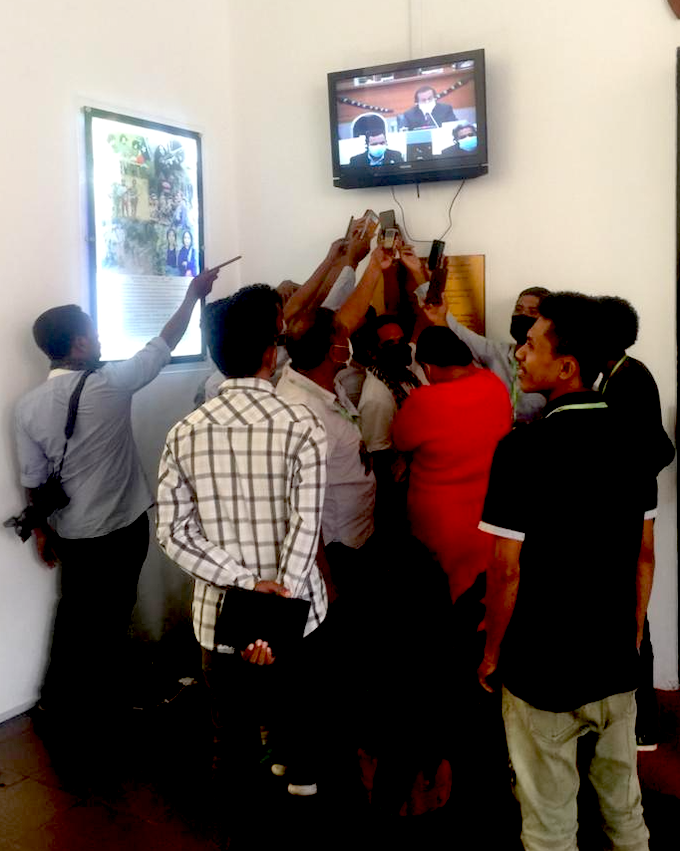
COMMENTARY: By Bob Howarth (self-isolating in Australia after his latest trip to Timor-Leste)
After days of web surfing for Covid-19 coronavirus news around the Asia-Pacific, two areas that appear to need improving in some countries are official communication and fact checking.
So here’s my two cents, rupiah, kina or tala worth.
Fact checking:
Journalists everywhere need training in fact checking. This month Timor-Leste held its first training in fact check techniques, organised by its press council and sponsored by the United Nations Development Programme (UNDP), for 80 journalists and NGOs.
Most training was in their Tetum language and the lead trainers Raimundos Oki (who did four weeks of training beforehand with Google in Singapore) and web guru Armindo de Jesus covered everything from how to track deep fake imaging and advanced searches.
The press council’s media development director Alberico da Costa Junior reminded attendees of the council’s code of ethics which covered balance, accuracy and addressed the use of social media and personal opinions.
The reaction of the majority: We want more training.
In the South Pacific only two countries appear to have certified fact checkers: Australia and New Zealand. For details on global fact checkers and the certification process this link at the Poynter Institute is the most helpful: https://www.poynter.org/media-news/fact-checking/
QUESTION: Does your country and its media need fact check training?
Official communication:
My colleague on The Jakarta Post, Endy Bayuni, recently wrote this opinion piece on the performance of some of Indonesia’s leaders. It’s worth reading:
Covid-19: Mr President, you need professional help
So what are the lessons learned so far by official spokesmen in televised press conferences in the region?
Australia: Its prime minister and top health expert give updates several times a day in a courtyard. Previously it was difficult to hear any reporter’s questions but deaf viewers could follow with professional signers. For recent “pressers”, audio of questions was added.

New Zealand: Prime Minister Jacinda Ardern impressed the world with a live Q&A from her home wearing pyjamas which led to an outpouring on social media of viewers wishing she was their leader.
Fiji: The prime minister has mostly the same set with flags draped behind him and a serious military figure in the background. Not a lot of hard questions.
Papua New Guinea: The prime minister has been overshadowed in performance by his young Minister for Police Brian Kramer, who not only chastised local reporters for not self-distancing 1.5 metres but repeated questions viewers couldn’t hear. Worst performance was the PNG Health Minister who failed to self-isolate with a gaggle of other Big Men in earlier telecasts. Excellent coverage by the local EMTV network.
Samoa: The PM has set scenes looking very tropical and kept a tight rein on the information flow.
Meanwhile, in Timor-Leste its president in formal settings kept up a steady flow of updates but his health minister’s performance resulted in formal protests from all local journalist groups about a lack of information. Mainly in the form of handouts and no questions.
Thailand: The health minister also didn’t miss out on his share of bad reviews for TV performances by the popular Asian Coconuts website:
Health minister under fire, again, for saying infected medical staff weren’t careful
LESSONS LEARNED: Many leaders need professional advice. Other key advice:
- Signing for the deaf should be mandatory (although a radio disc jockey in PNG who made fun of the excellent young woman providing the service was sacked for his online mockery of her in a Tiktok video. Karma).
- Viewers and listeners need to hear the media questions or speakers should repeat them before answering.
- Leaders do not need a posse of bored, huddled people with big bellies behind them to distract from their message. Nor should the bored posse clap announcements.
- Last, but not least, reporters should do their homework so there are lots of valid questions … and self-distance please.
Here endeth the lesson.
Bob Howarth is a veteran Australian journalist and trainer who recently returned from Timor-Leste to assist in fact check training. He is a frequent contributor to Pacific Media Watch.




































